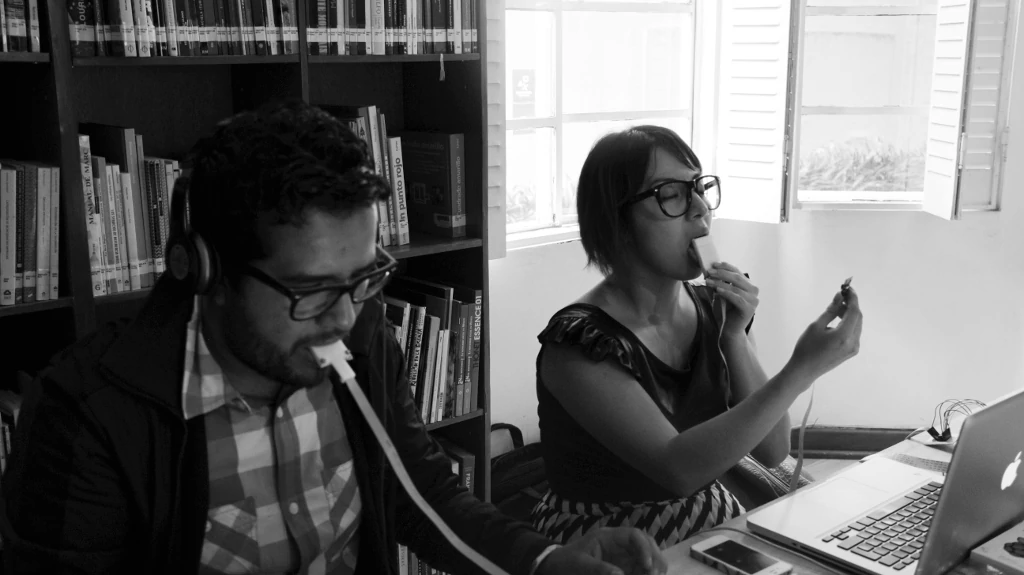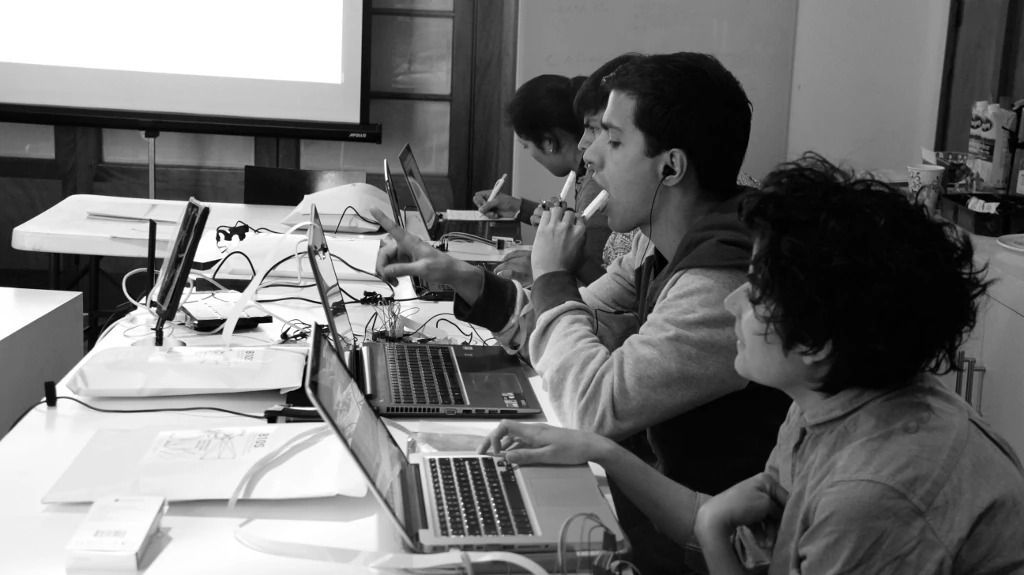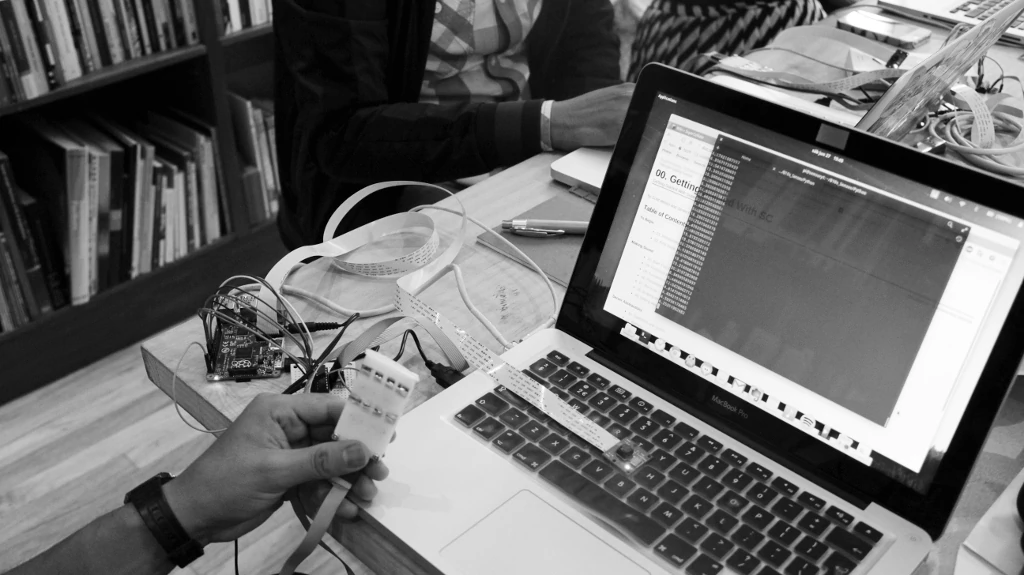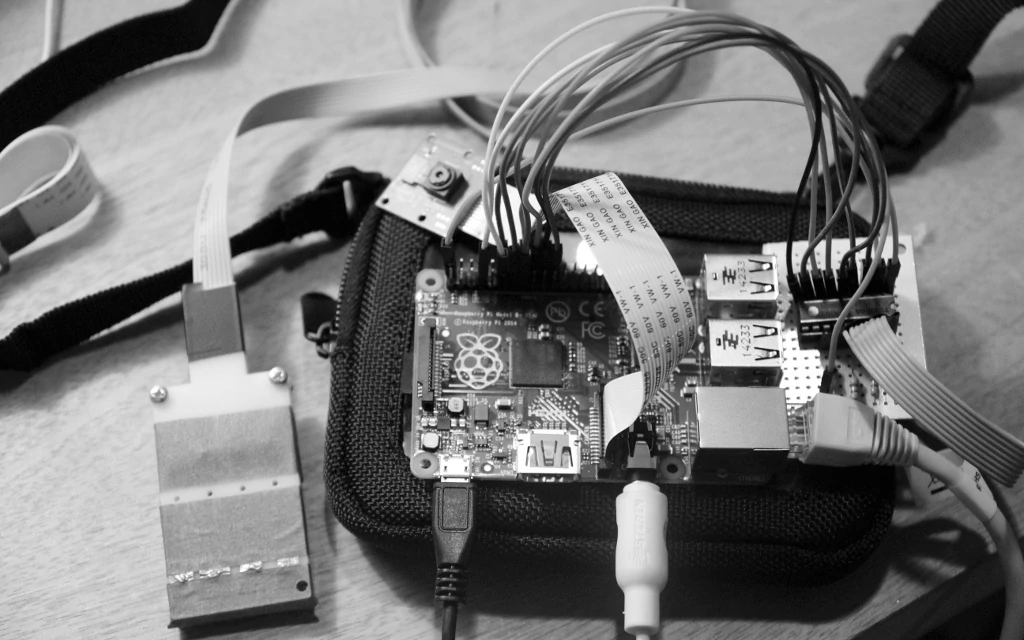Project done with the Interspecifics collective.
The B10S programme was a series of meetings for the artistic exploration of life sciences. Through a series of practical, experimental laboratories, the project tried to analyze and understand some of the tools and strategies present in the practice of bio-art from a Latin American perspective.
For the second meeting of the project, we decided to explore sensory substitution and its implications on the body.
The term sensory substitution refers to a non-invasive technique introduced by the neuroscientist Paul Bach-y-Rita in the 60’s to assist the restoration of damaged senses using hybrid brain-machine interfaces to redirect certain stimuli from one sensory modality to another and use the elasticity of the brain to replace certain perceptual capabilities. It suggests that while the brain and any one of its connections to the environment operate properly, peripheral sensory systems are secondary in the exercise of global cognition.

What would this mean for a person without any visual impairment? Is it possible to create unexpected perceptual experiences or is there such thing as sensory oversaturation?
The objective of this laboratory was to implement a prototype for sensorial substitution that allowed the brain to create a spatial map of the environment from sound and electro-tactile stimulation, and in this way study the possibility of expanding human abilities and challenge the Aristotelian concepti that postulates five senses with specific functions clearly separated from each other.
Each participant built their own prototype made up of a RaspberryPi, camera, headphones, small current amplifier circuit and tongue paddle, and programmed it using a combination of Python scripts and SuperCollider patches.


